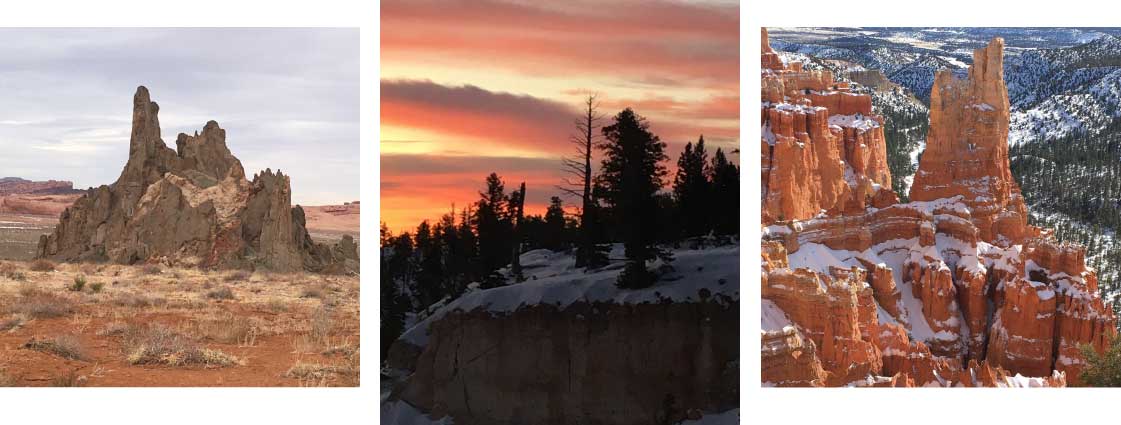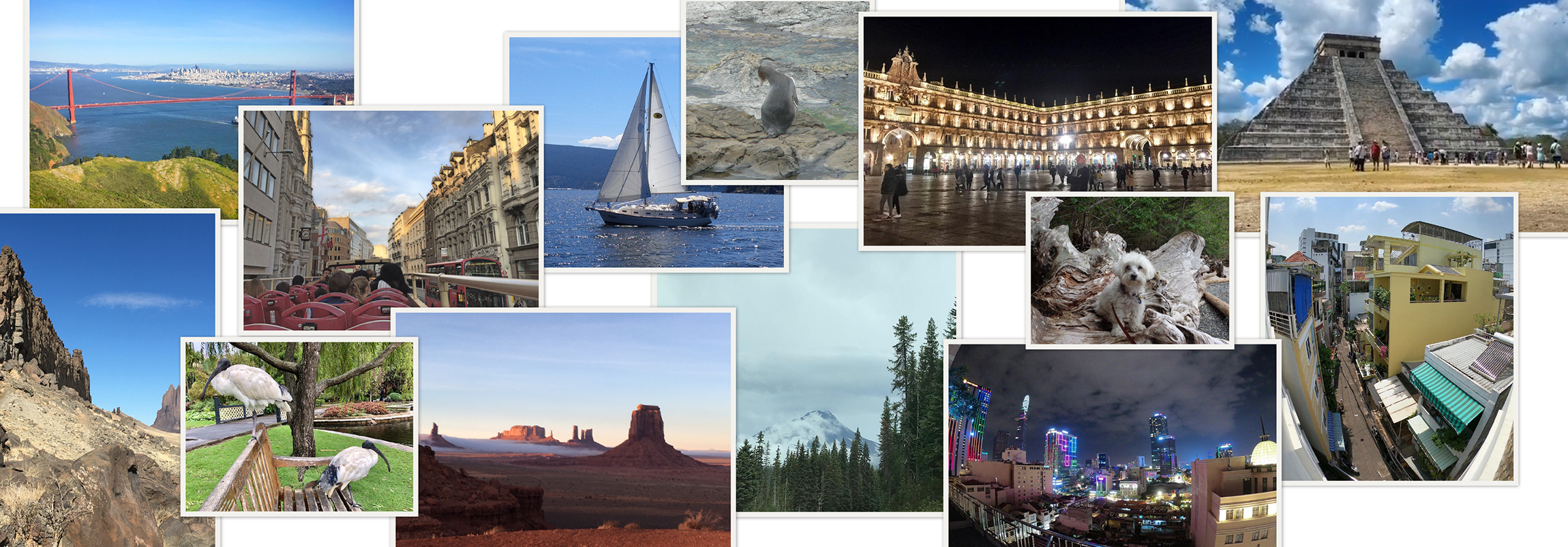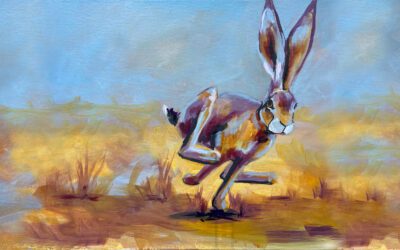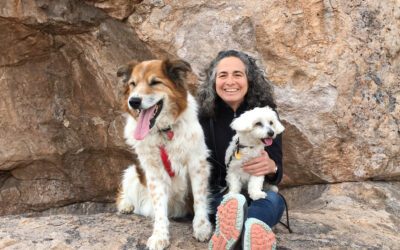Some of these words have been percolating through my mind for weeks, and I intended to transfer them to paper for Earth Day in April, but I think the time is right, right now.
In my last post back in November, I talked about rocks in my backyard, specifically the Madera Limestone. After traveling so much last year, I felt particularly grateful to be back in my own big backyard. But the travel also heightened my awareness of and appreciation for all our backyards. The way we move around the world makes so many places accessible to so many people – a friend recently spent a few days birding in Australia; which made me think of some special birds (Penguins!) I saw on travels to New Zealand; another friend recently returned from a language immersion program in Salamanca, Spain; and my first mate, Eric, and I live both on our sailboat cruising British Columbia’s coastal waters and here in the high desert of New Mexico. The whole world can feel like our backyard.
A conversation about backyards got me thinking about all this – a friend told me about a community group she heard was protesting expansion of an urban trail. That group, no doubt, uses the existing portion of the trail, but opposed the extension because it would go right by their backyards. This group would most likely be in favor of the extension, if it were to be located, say, one block over – not in their backyards, but in someone else’s. It’s a classic example of the NIMBY (Not-In-My-Back-Yard) principle.
For the Earth Day essay I contemplated, I was going to write about how we must consider our bigger backyards, our community backyards, indeed, our global backyard. Climate disruption should have us all thinking long and hard about that, and taking action.
But the novel coronavirus that causes COVID-19 has, within a few short weeks, brought the global picture into really sharp focus; focus I hope we don’t lose when this crisis fades from the headlines. Uncertainty, of nearly everything, except the spread of the disease, is pervasive. For many, fear follows on uncertainty’s heels. A sense of helplessness too.
For years, I’ve tried not to succumb to fears, but I’d be lying if I didn’t admit to a twisty feeling in my gut these days. A lot of people I love are in the higher risk groups for the impacts of COVID-19. I am too (yes, even if we don’t feel our age, if we’re of a certain age, there we are).
Helplessness is also not a feeling I’m accustomed to; I’m a “just do it” type. But, what to do? Epidemiologists are in strong agreement that extreme social distancing can slow, and perhaps lessen, the spread of the virus. Here’s a link to a Washington Post article that translates the science and math of how social distancing does that. So, do it! And here’s another picture of how social distancing works:


I know panic is not productive, and I know ways to quell it, so I’m reminding myself to do those things, not just think about doing them. And there is time and space now, as my normally busy schedule shifts with social distancing. Like breathing, for one. Yes, taking good, long, deep breaths. Yoga and meditation. Even for a few minutes at a time. And Capi, of course. For me, a little canine cuddle time can be a short cut to calm.
I’m also walking in my backyard, and thinking about all my backyards – from the one whose trail I’m hiking – to my Placitas community – to New Mexico – to the stunning American Southwest – to the entire U.S. – and to the global community. It appears to me from the reading I’m doing (and, please, do your reading from responsible sources – both the New York Times and Washington Post are offering free access to their coronavirus updates) that taking care of myself and my family is a good start in taking care of the wider community – that’s exactly how social distancing works. But we have to really do it – not just when it’s comfortable or convenient. We especially have to do it when it isn’t. For ourselves, for everyone.

And ways to help with that helpless feeling? Help those in my communities who are going to suffer from the financial hardships that have already begun, and will worsen before they get better. I can call my legislators and push them to vote for bills that will help families in need. I can donate to a food bank. I can shop online at small businesses (even if I don’t need anything, I can buy a gift certificate that will infuse them with a little cash, and help them survive this crisis). If we all take small steps, we can help in big ways.
We live in a world where we can’t be NIMBYs – my backyard is your backyard is our backyard – let’s take care of it, and each other.




Wise words, Deborah. Thank you!
Thank you for these words Deb, you always manage to instil a little calm in my soul.
Great read Deb. Hope the rest of the world takes heed.
I thought this post was going to say that you’re inviting us all to sit this out in your big backyard… 😉
Be safe and well. Love, S.
Sharon, I thought so too. Sigh. Guess we will just have to backyard Deb’s words and make our own backyards into our place of safety and sanctuary. Be safe out there everyone.
Deborah, Thank you for these thoughtful words. It’s shocking to me that there are those who say this is all a hoax. We are all neighbors, and everything we do affects many others. This is our pandemic.
Great job! The world we be a better place if we did not have the nimbe thing! I love my backyard, whether my local one or the whole world. Thanks, Deb!
Well said. Hopefully, when we come out the other side of this crises we will be fundamentally better people.
Well said. Hopefully, when we come out the other side of this crises we will be fundamentally better people.
Great Reminder for us all. I am hoping a lot of people wake up and start caring for others and not so much on themselves.
Here is a rumor control website if you are interested.
https://www.fema.gov/coronavirus-rumor-control
Thanks, Deb – I love how your travels and your land and sea life have redefined “back yard” for you so you could help us redefine it!
I live in North Carolina, the land of high botanical diversity, but, unfortunately, also the land of high invasive species diversity. Many of these species are introduced through the horticultural industry. Two being periwinkle – Vinca minor and V. major. Years ago, Deb helped me eradicated V. minor from our “South Lawn.” (I still am thankful) Our back yard is a Dry/Mesic Oak/Hickory forest with the herb layer covered by both of these species that was planted by the previous owner. Over the years I tried to ignore it; not wanting to take the time or energy. Herbicide is not an option because it’s a salamander hang out. These days while sheltering in place I’m tackling the Vinca. As I rip the vines out of the ground, underneath I’m finding bloodroot, toad shade trillium, native chickenweed, and other native herbs. There is resilience to nature; given a chance.
Thank you, dear Deb. This is a wise and thoughtful response in this time like no other we haved lived. And it is truly amazing how this “distancing” is bringing many of us closer together in profound ways. I find our family is communicating much more than it has in years! Friends reach out and express appreciation. And I watch the larger pattern of resilient systems begin to shift and adapt and innovate. The pain in this real, but so is the potential. We are at our best when we are the learning organisms we are designed to be! Miss you, dear fried, but you are always there!